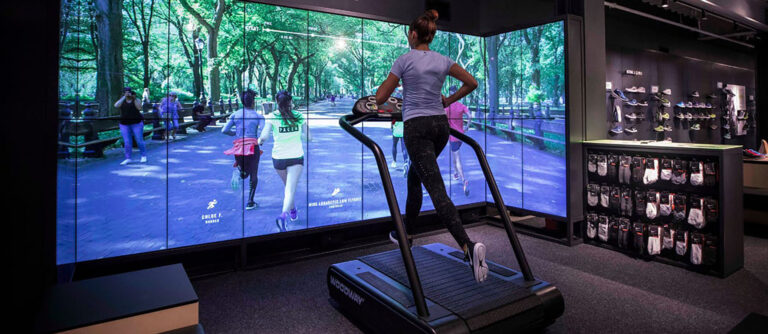Why are people willing to pay $4 for coffee at Starbucks and clog Apple stores to play with electronic gadgets? Both companies reinvented the retail experience.
Have you wondered why we linger in an Apple store, playing with shiny screens, but never set foot in a Sony Style store (which, incidentally, has its devices locked behind glass doors)? Why are one company’s stores a multi-billion dollar business while the other doesn’t even show up in their annual report?
The difference is that Apple has created something very different from the cold, “hands-off” nature of traditional high-end stores, while avoiding the clutter of a warehouse store like Best Buy. In sociological terms, Apple has very deliberately changed the “script” of electronics shopping.
What do we mean by “scripts”? Sociologists have spent years studying experiences and have noticed that there are shared rules that govern how we act. These scripts are unwritten and unspoken, yet greatly influence our day-to-day behaviors and interactions.
Scripts are why we know what to do when we go to the DMV. Unfortunately for the DMV, that script includes complaining to the people in line with us, expecting a bad photo to be taken, and talking afterward about how inefficient the process was. On the other hand, a birthday party is supposed to be a happy experience. We appropriately sing and smile, often in spite of how much is on our minds.
In the mundane routines of our lives, experiences that stand out are often those that change the existing scripts. Mini Cooper, for example, replaced the “cheap small car” script with one that leverages the fun aspects of driving a rally car.
To truly design a great experience that’s right for your company, we need to look beyond the field of design to sociology, economics, organizational behavior, and even theater. These seven principles will help you be strategic about the experiences you design and choose the right script for your company.
1. Experience design is not about luxury.
As soon as the conversation turns to design and customer-centered activities, the knee-jerk reaction is to cast the product as a “premium” idea. The truth is that customer experience can be central to even “value-based” businesses. Consider Southwest Airlines. At its best, the combination of heart, humor, and efficiency makes for a distinctly Southwest script for air travel that’s different from the norm.
2. Start with empathy.
Understanding and challenging social scripts requires stepping into your customers’ shoes. Harley-Davidson has a strong community of riders as brand ambassadors precisely because its employees are the kinds of people who equate biking with life and freedom, and regularly hit the open roads.
3. Do your own thing.
Find authentic sources of connection with your customers and stick to them. People will value originality as long as you continue to serve their needs. Target was a discount retailer trying to outdo Walmart on price before it realized it could create a destination for the design-minded community, providing a lot more value.
4. Utilize all elements of theater.
Create an immersive world with consistent rules. To reinforce the script, think of the whole experience as a “play,” including the cast, costumes, set, and props. Starbucks employs all of these elements in their coffee-shop experience– everything from the interior design to the names of the drinks are considered in delivering the experience Howard Schultz envisioned when popularizing the “coffee-shop” script in the U.S.
5. Use different incentives to create different behaviors.
Align your people, including their incentives and motivations, with the desired experience. Saturn changed the car-buying script in the 1980s by employing salaried salespeople–and eliminating a stereotype of the sleazy car salesman who’s after commissions.
6. The devil is in the trade-offs.
The experience you offer should have a clear point of view. What you leave out often says more than what you leave in. Chipotle refuses to use freezers, in the fast food industry no less. And Whole Foods won’t accept over-processed foods in its aisles. Managing trade-offs tightly is essential to creating a script with a character that inspires people and separates a brand from the pack.
7. Evolve to stay relevant.
Never stop prototyping and testing changes to make the experience better and to change in step with people’s needs. McDonald’s has proved surprisingly resilient through market ups and downs. It constantly experiments with its experience at its Innovation Center in Illinois, making sure new elements–like its wildly successful coffee offerings–support and augment its business goals.
Designing great experiences is a blind spot for many corporate leaders. It’s an area of expertise that needs just as much attention, rigor, and patience as the other aspects of business excellence taught in our B-schools. And with folks like Apple raising the stakes, ignore it at your own peril.



